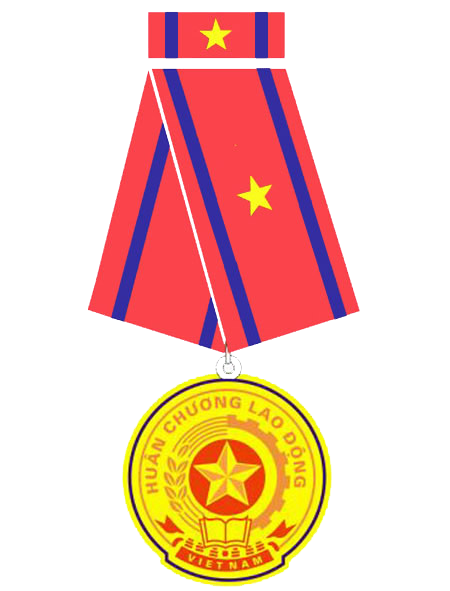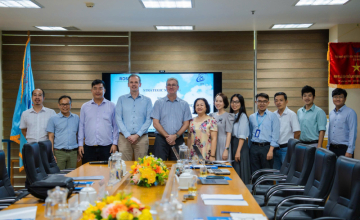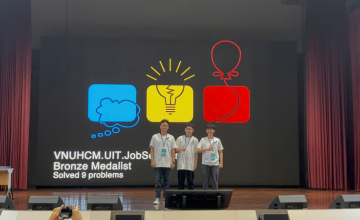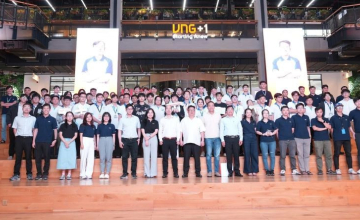Application of GIS and Remote Sensing Technology to Build a Potential Flood Map for Quang Tri Province
Authors: Tran Vo Tan Tai, Le Thi Thiep, Nguyen Thi Phuong Quyen
In recent years, many storms, floods, and landslides have swept away houses, property, and caused numerous casualties, disrupting production activities, especially in the central provinces of Vietnam. Floods are formed due to the combination of various factors such as terrain characteristics, soil structure, vegetation cover, and rainfall. The reduction in forest area and climate change have made floods more frequent and harder to predict. Therefore, forecasting and prevention of floods play a crucial role in minimizing damages.
Currently, geographic information systems (GIS) and remote sensing technology are widely used in many fields, including natural disaster warnings. The purpose of this research is to combine remote sensing and GIS technology with the Flash Flood Potential Index (FFPI) to delineate flood risk areas in Quang Tri Province.
Quang Tri Province is located in the North Central region of Vietnam. Its terrain gradually decreases from the west to the east, with rainfall concentrated during the rainy season. It has a dense river and stream network with steep slopes. Additionally, deforestation in some areas due to human activities (logging, agricultural expansion, etc.) has increased the likelihood of landslides. Given these natural characteristics, Quang Tri is prone to landslides. Moreover, the province's economy and society have developed significantly, but it still heavily relies on agriculture, and people's lives face many difficulties. Therefore, the impacts of landslides significantly affect people's lives in various aspects (life, property, psychology, etc.).
The research content includes collecting data and using GIS and remote sensing methods to process satellite images and classify the FFPI (Greg Smith, 2010) for each component factor: slope, soil type, land use status, forest cover density, and rainfall distribution. Each dataset will be assigned FFPI values from 1 to 10, with 1 being the lowest and 10 being the highest. Each component is weighted and stacked to produce a flood potential map. The smallest value of 1 corresponds to the least affected area, and the largest value of 10 corresponds to the area with the highest flood potential.


The flood risk map of Quang Tri Province is established with 4 levels of risk: very high, high, medium, and low. The results show that in the 7 districts and 2 towns, areas with high flood risk are mostly in the districts of Dakrong, Cam Lo, Huong Hoa, and Hai Lang. The total area of districts in the high and very high flood risk zones accounts for more than 20% of the province's total area. These are districts with high mountains, steep slopes, strong terrain division, difficult transportation conditions, and prone to isolation. They have gray soil with a high clay content, sparse forest cover, and significant average monthly rainfall. Specifically: The western districts of Dakrong (383.5 km2), Cam Lo (30.1 km2), Huong Hoa (259.8 km2), and the coastal areas in the southeast of Hai Lang (383.5 km2). For areas with low risk like Vinh Linh, Gio Linh, northeast of Cam Lo, Trieu Phong, and Quang Tri.
Currently, the map provides a relative assessment of areas at risk of landslides. However, its accuracy is still limited because it mainly depends on available data and lacks the ability to measure real-time information. Nevertheless, it provides a general view of areas that may experience landslides in the future to implement prevention and mitigation measures and contribute to stabilizing the community's life.
Best regards.
For more information, please visit: https://fit.uit.edu.vn/index.php/tin-tuc/goc-hoc-tap/6602-ung-dung-cong-nghe-gis-va-vien-tham-xay-dung-ban-do-tiem-nang-lu-quet-tinh-quang-tri
Dong Xanh - University of Information Technology Communications Collaborator







